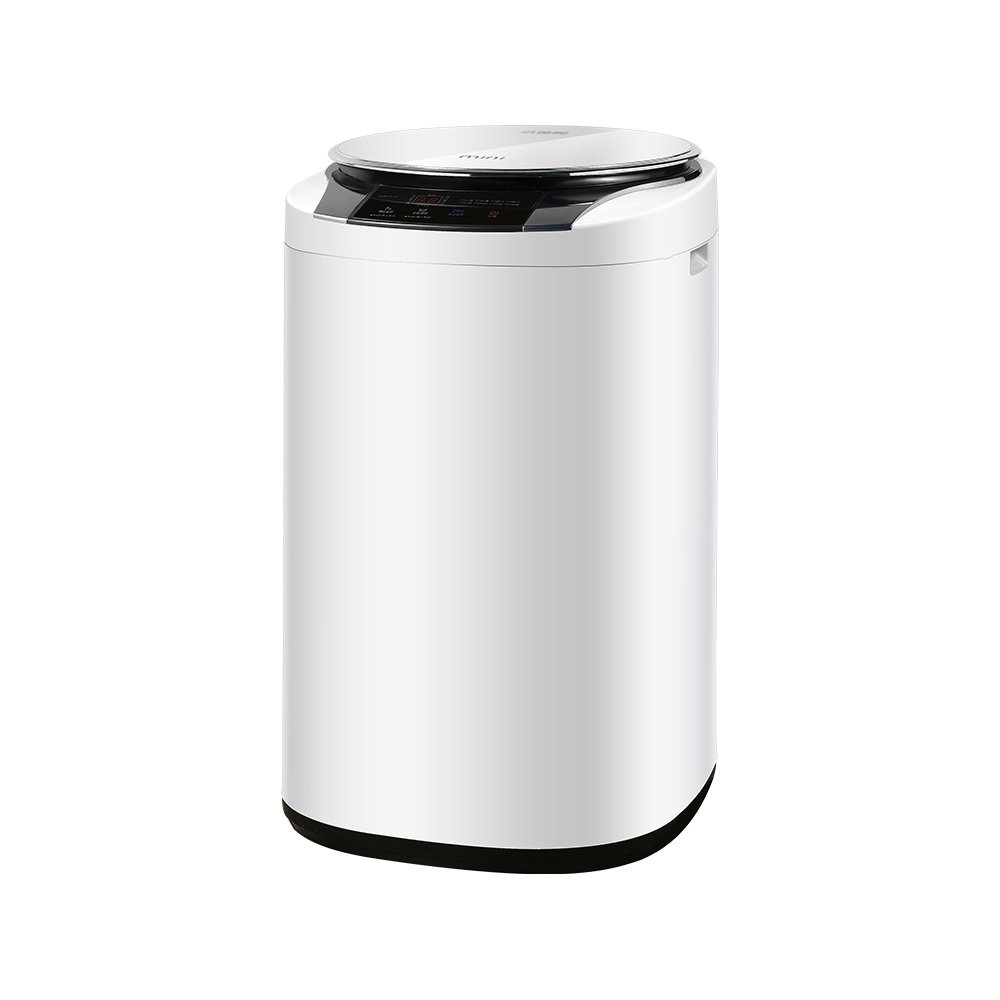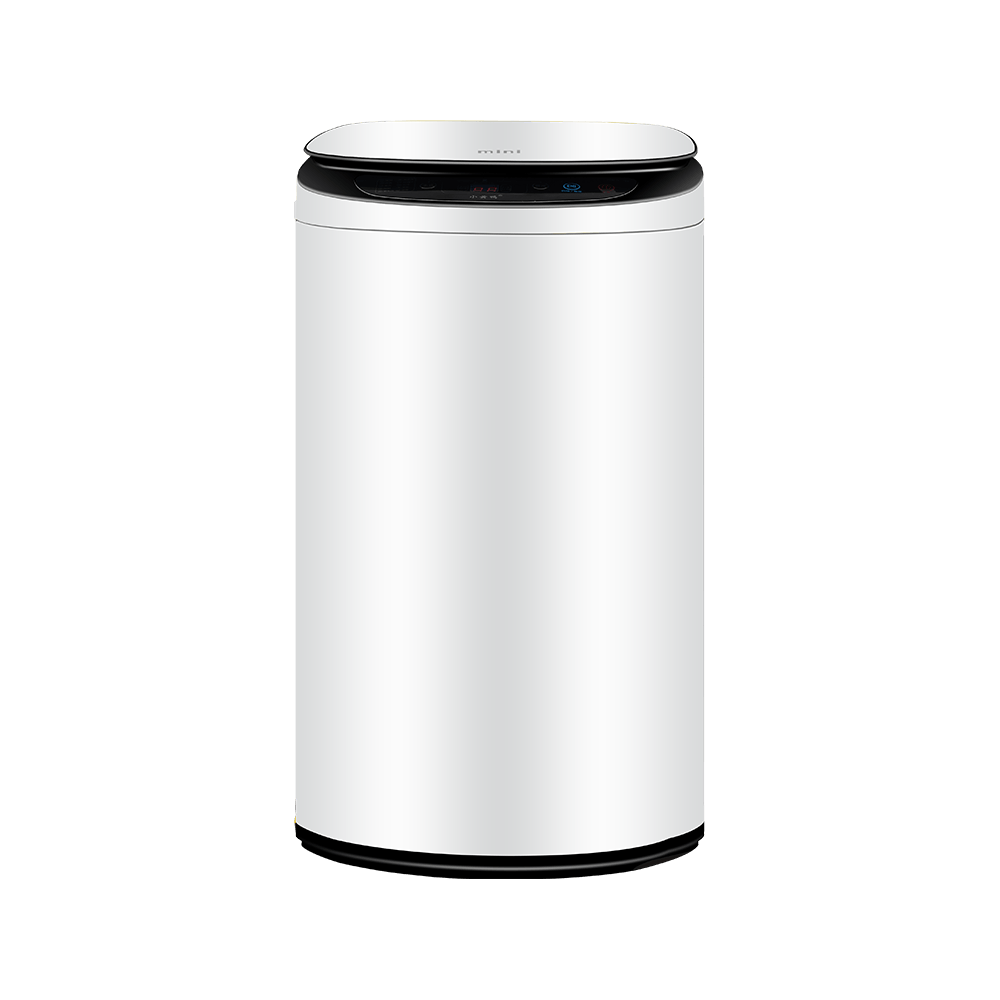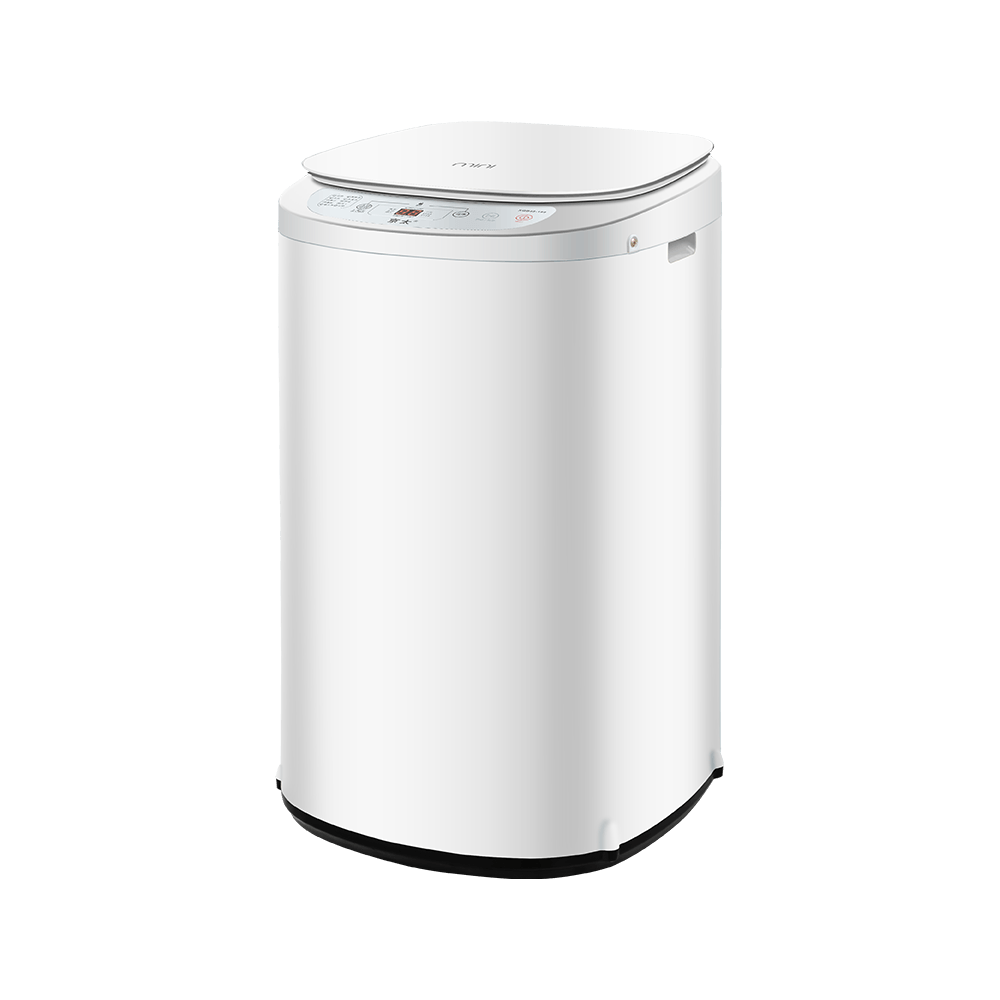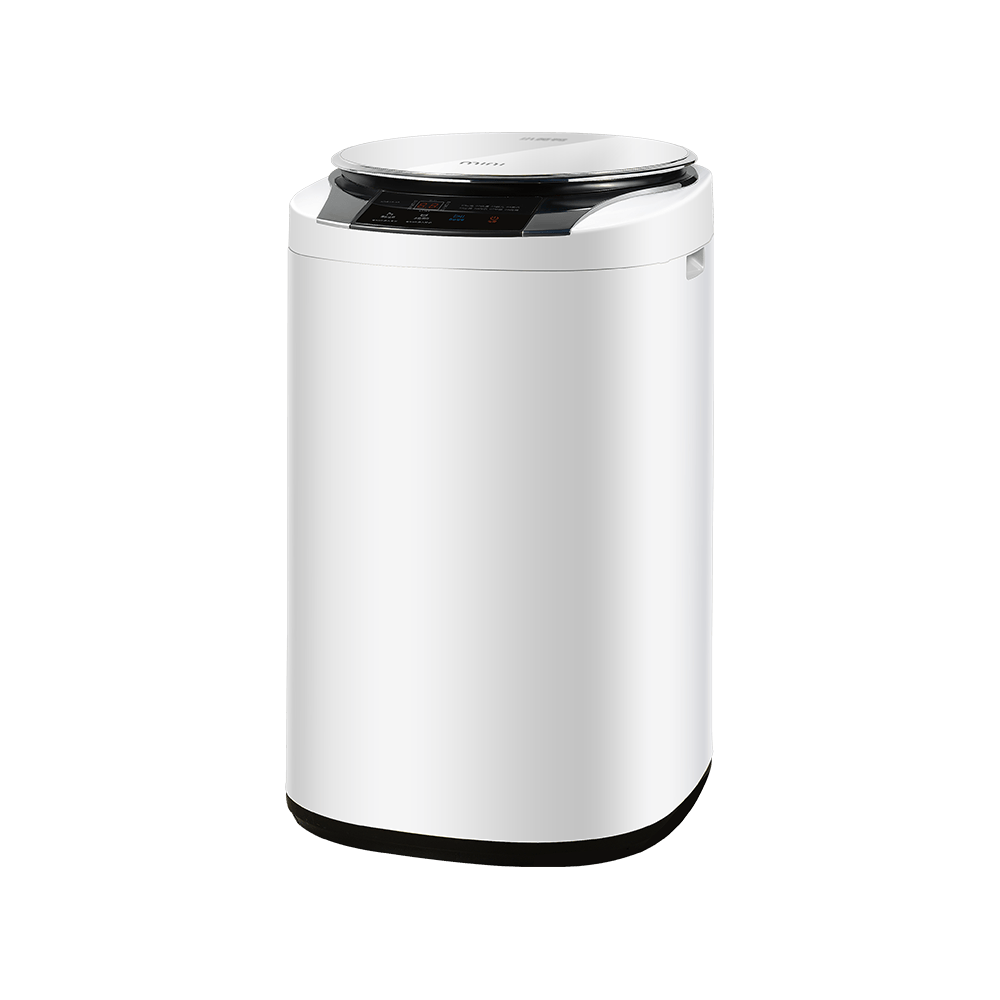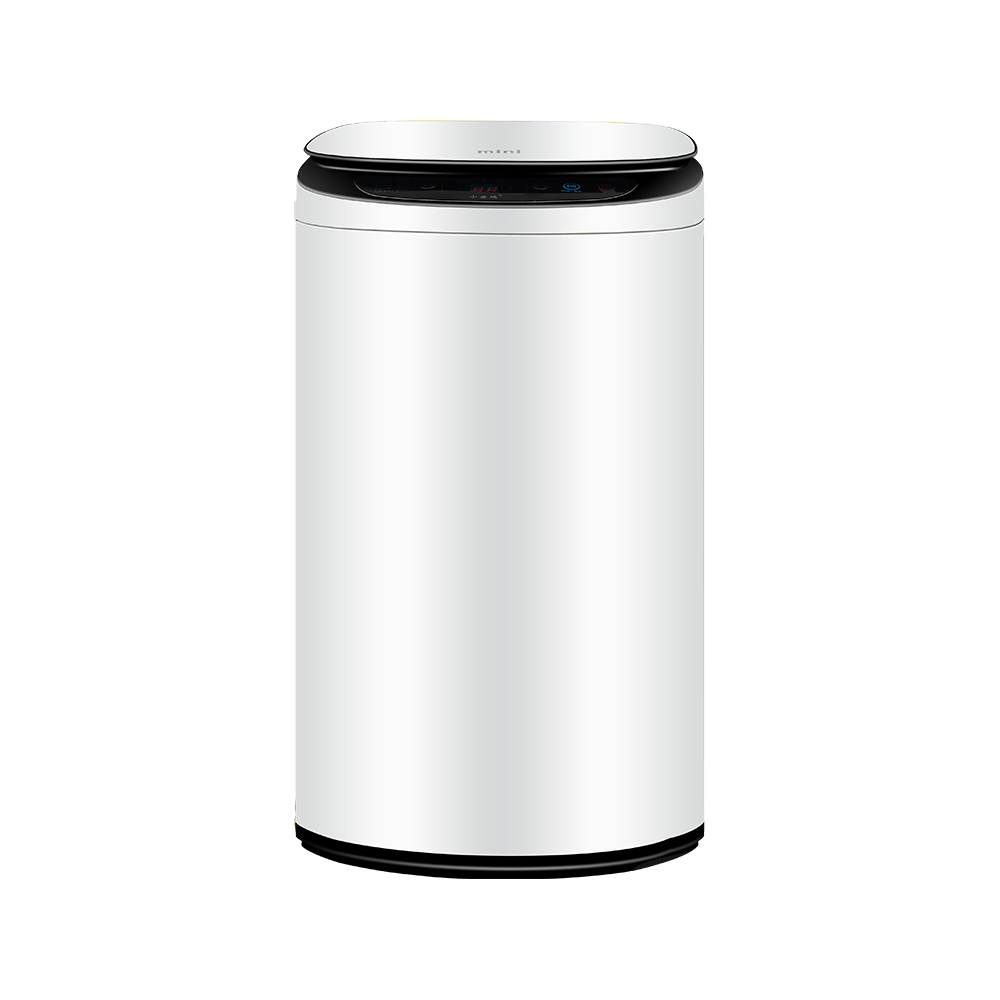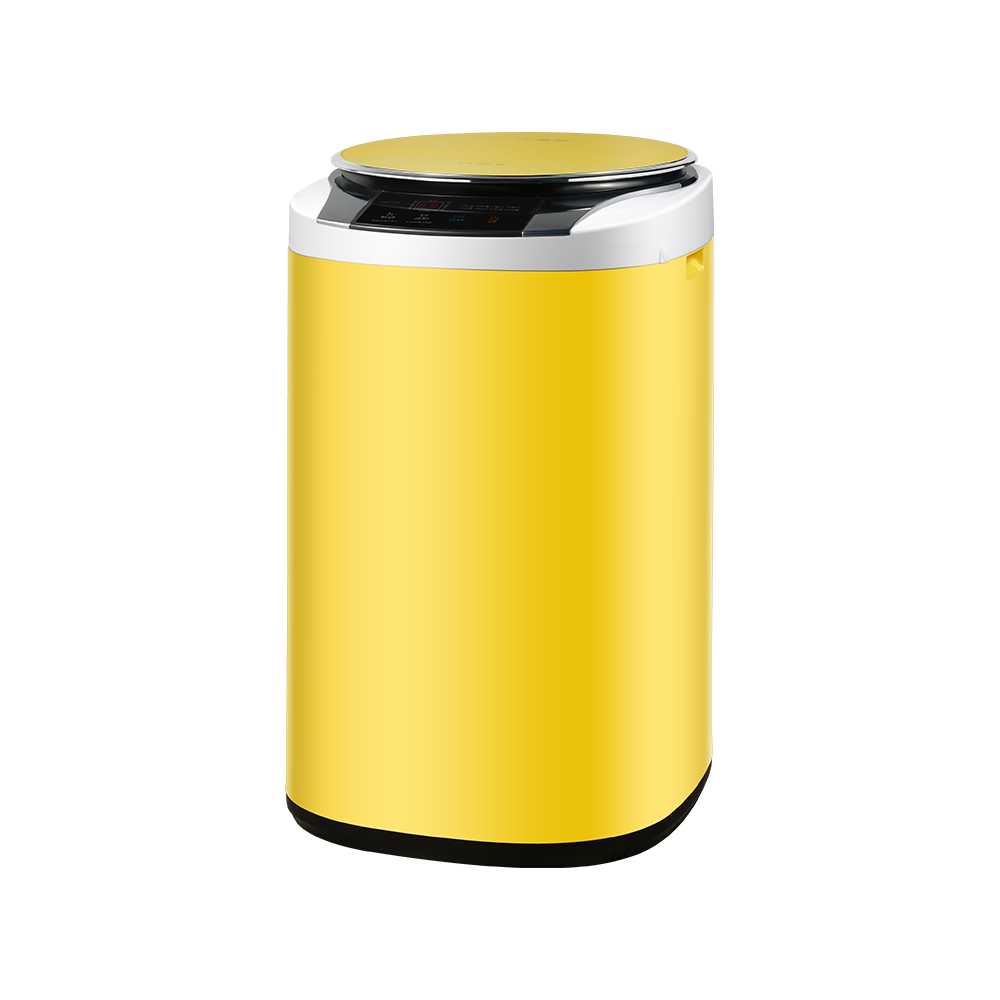Difference in working principle
There are big differences in the working principle between fully automatic washing machines and semi-automatic washing machines. When using a fully automatic washing machine, you only need to set the program once, including water intake, washing, rinsing and dehydration, and the equipment will automatically complete all operations without human intervention. Semi-automatic washing machines usually require users to manually operate between each link, such as manually draining water after washing, re-introducing water, and transferring clothes from the washing tub to the dehydration tub. There is a significant difference in the degree of automation between the two, and fully automatic washing machines are more time-saving and labor-saving.
Difference in structural design
Fully automatic washing machines generally adopt a single-barrel design, that is, one barrel completes all washing, rinsing and dehydration processes. Its internal structure is relatively complex, equipped with a variety of sensors, program control systems and water level adjustment devices. Semi-automatic washing machines are mostly double-barrel designs, namely washing barrels and dehydration barrels, and washing and dehydration need to be completed in two barrels respectively. Due to the different structures, the overall volume of fully automatic washing machines may be slightly smaller, suitable for families with limited space, while semi-automatic washing machines are relatively large in volume and space due to their double-barrel design.
Operational convenience
Fully automatic washing machines are easier to operate. Users only need to select the appropriate program mode, and the washing machine can complete the entire process. This design reduces the number of operating steps and is especially suitable for families with a fast pace of daily life. Semi-automatic washing machines require users to intervene at multiple stages, such as manually draining the water after washing, and then operating the dehydration program. Therefore, fully automatic washing machines are more worry-free in use and are less likely to have problems caused by operational omissions.
Differences in water and electricity performance
The water inlet and drainage of fully automatic washing machines are automatically controlled, and the water consumption can be adjusted according to different programs and clothing weights, which is more advantageous in terms of water saving. It can also reasonably distribute electricity during the washing process. Although semi-automatic washing machines usually consume less power, the overall water consumption may be relatively large due to the need for multiple water inlet and drainage and manual adjustment. In addition, semi-automatic washing machines may cause uneven or wasteful water use due to human factors during operation.
Washing effect comparison
Fully automatic washing machines are equipped with a variety of program modes, such as quick wash, standard wash, wool wash, baby clothes wash, etc., which can be used for appropriate washing of clothes of different materials and different degrees of dirtiness. The water flow design and drum rotation mode make it wash evenly and cause less wear on clothes. Semi-automatic washing machines have relatively simple washing modes. Most of them rely on turbines or impellers to generate water flow to wash clothes, which may not provide enough protection for delicate clothes. When dealing with special clothes, semi-automatic washing machines have fewer options.
Differences between maintenance and cleaning
Fully automatic washing machines are more closed in structure. After long-term use, they may be prone to dirt accumulation and mildew in the inner barrel, which requires regular cleaning and maintenance. However, modern fully automatic washing machines are generally designed with self-cleaning programs for easy maintenance. Semi-automatic washing machines are more direct to clean due to their relatively simple structure and large opening, but because of the double-barrel design, the washing barrel and the dehydration barrel need to be cleaned separately each time, and more time is required for maintenance.
Comparison of prices and applicable scenarios
From the perspective of market prices, the price of fully automatic washing machines is generally higher than that of semi-automatic washing machines of the same capacity. This is because fully automatic washing machines have more technical content, automation and supporting functions. Semi-automatic washing machines are more affordable due to their simple structure and low manufacturing cost. Fully automatic washing machines are suitable for busy families who pursue convenience, especially in limited space environments such as urban apartments; semi-automatic washing machines are suitable for users who are more sensitive to prices or need to use them in special environments (such as outdoors and temporary housing).
Differences in safety and user experience
Fully automatic washing machines are equipped with a number of safety protection measures, such as child locks, power off when opening the lid, water level detection and other functions to ensure safety during use. Its closed design reduces the possibility of accidents during the washing process. Semi-automatic washing machines require frequent intervention in operation, and may bring certain risks during use due to improper operation, such as splashing water or abnormal operation of the spin bucket when the barrel lid is not tightly closed during spin drying. In addition, fully automatic washing machines are quieter in user experience and have relatively small vibrations, while semi-automatic washing machines may produce large noise and vibrations during the spin stage.
Technology upgrades and development trends
With the development of intelligent home appliances, fully automatic washing machines have gradually integrated new functions such as the Internet of Things, remote control, and automatic detergent delivery to enhance the user experience. However, the technical upgrade space for semi-automatic washing machines is relatively limited, and new products on the market are mainly concentrated on basic levels such as appearance improvement and energy efficiency improvement. The future development direction of fully automatic washing machines will focus more on intelligent energy saving, environmentally friendly materials and user interactive experience.


 English
English عربى
عربى